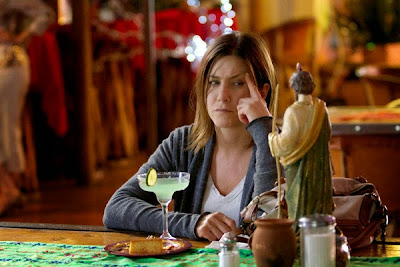Sadly, Jennifer Anniston’s “Cake” did not do for
chronic pain syndrome what “Still Alice” did for Alzheimer’s.
It failed to bring to light the complexity of this
illness, or at the very least, show what one human being goes through because
of the nature of chronic pain disease.
I think the mistake is because the movie starts with
Claire Simmons, (Jennifer Aniston) already in the midst of her illness, going
through a therapy session. My issue with Jennifer’s acting is that she showed
no way to deal with chronic pain with courage, or spunk or some vulnerability. What’s
more, to show chronic pain with bitterness is not attractive.
The gist of the story is that Nina, one member of
the group, committed suicide. Claire (Aniston) has a way of pushing everybody
away from her. Her therapy group kicks her out, her pool therapist wants to
switch patients, she is divorced, and the only people who are close to her are
her maid Silvana and the gardener who doubles as her body for hire.
Fine. They show she’s isolated, and they also show that
she has scars on her face and body, and she allows herself to look ugly (like
Nicole Kidman did with a fake nose in another movie).
Script
problems?
They show she has pain in sitting down, getting up,
she lies on the chair in the car while Silvana drives, She screams during pool
therapy. But we don’t know why. If there was a scene with a medical doctor
where Claire could explain her symptoms, where she hurts, how often, it would
help.
It would also help if the doctor then explains
chronic pain syndrome and gives Claire some sort of prognosis of her chances of
getting back to a normal life. She could give general information about chronic
pain syndrome as well.
It would also have probably helped if the first
scene in the movie showed her before she fell ill. It would have helped to
explain who she was before her loss. A happy, beautiful woman with a child and a
husband, and suddenly she loses it all – her beauty, her health, child and
husband. Then, her bitterness might have been more acceptable to an audience.
Aniston’s
acting
But Aniston also fell short on some scenes where she
could have shined. The scene where the man who caused the car accident that
injured her and took away her son should have been her scene. Instead, she was
so dislikeable that you felt sorry for the man.
When you deal with a character’s dark side, you need
to have redeeming qualities to gain the audience’ sympathy. This happened too late, and in too
small shrivels of information throughout the script. There was not enough information
to explain her illness and show that she used to be beautiful.
Then, there is Claire’s obsession with the suicide
of Nina, her group mate in therapy, to the point that she threatens her group
therapy leader with a court suit unless she gets the address of Nina's home. The scene should
be funny, but instead it’s bitter and mean.
She then befriends Nina’s husband. At the same time
hallucinations appear over and over again. But the friendship with Roy, Nina’s
husband, opens her up. A reconnection with someone who has experienced loss
produces this bond and helps to pull her through her own suicidal tendencies.
This has been described as a dark comedy drama. I
don’t get the comedy. She’s supposed to be funny with some lines in her scenes
with Roy. She’s not, at least not to me.
One example of a scene that could have been funny and
charming (if Aniston didn’t say all her lines with a scowl) was when she shows
up late in the night at Roy (Nina’s husband’s) house:
Claire: “Your Nina’s
husband. I’m not a stalker, not in the traditional sense.”
Roy: “What’s going on?”
Claire: “I took a f***ing cab!”
Roy: “Why?”
Claire: “It dawned on me. You are more than a little depressed. I didn’t have your phone number.”
Roy: “You thought I was going to kill myself?”
Claire: “Not that that’s actually any of my business.”
Roy: “Well, I’m alive.”
Claire: “I see.”
Roy: “Ta da!”
Claire: “Good, you’re not dead. I don’t have to break in, call the police. That’s a relief.”
Roy: “You know you could have just said you wanted to come over.”
Claire: “Yeah, but what’s the fun in that?”
I wish Jennifer
Aniston showed evidence now and then in her scenes that there’s an inner light
waiting to surface through a mire of pain. I wish the last line of the above conversation
was funnier. I also wish Aniston said the lines with a touch of Rachel’s
lightness (her character in Friends) or something. Anything except pure sheer
glumness, sourness, and bitterness.
I don’t know if the
script, better written, could have saved Aniston, and certainly, Aniston didn’t
save the script. The movie could have done so much more for chronic pain syndrome.
Well, at least everyone tried.
Incidentally, I don’t
regret watching this movie. In fact, I’ve watched it more than once.
Imperfections and all, it’s worth your time and I hope someday a film will
focus on the illness with more clarity instead of making it another story of
another person who is struggling with suicide.




No comments:
Post a Comment